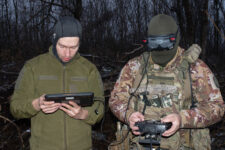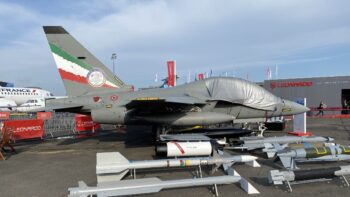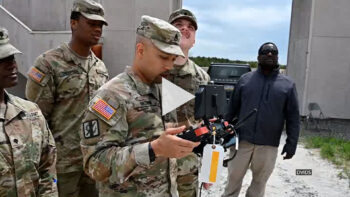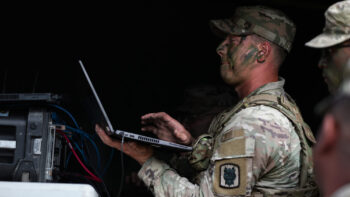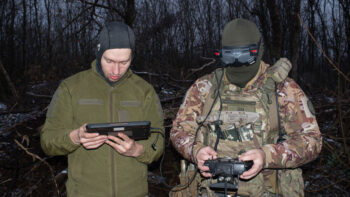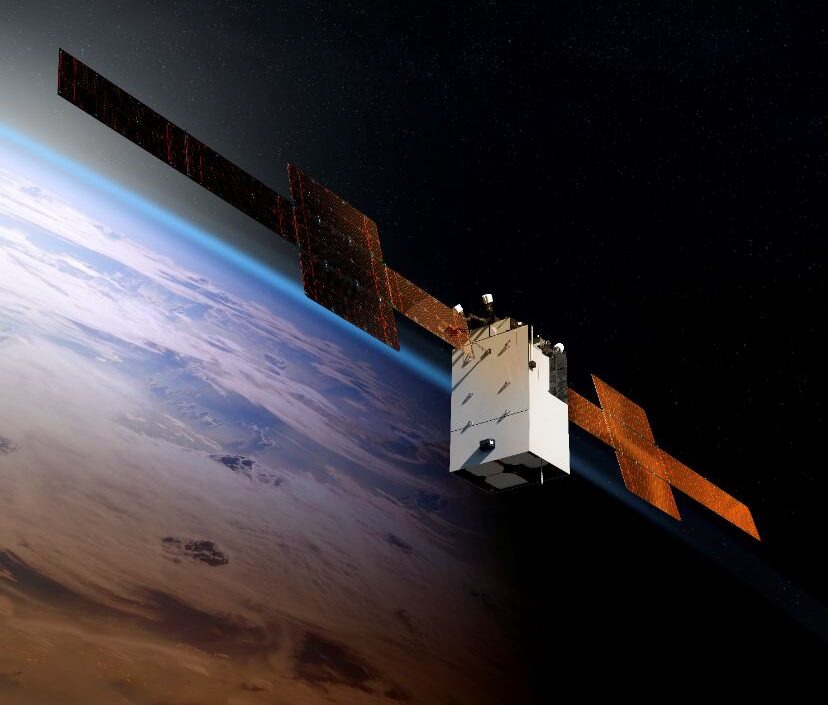
Wideband Global SATCOM satellite, Space Force image
WASHINGTON: The Space Force is preparing to launch a new effort to manage military and commercial satellite communications networks and link them to ensure troops in the field are always connected, even in the face of enemy jamming. This next stage in the rapid prototyping program is focused on ensuring 24/7 SATCOM availability for future All-Domain Operations (ADO).
Persistent access to SATCOM will be critical to providing Joint All-Domain Command and Control (JADC2), a key enabler of ADO, Space Force officials say.
The SATCOM Enterprise Management and Control Program (SATCOM EM&C) is “about assuring the availability of satellite communication services in a way that we can adapt to an environment that is contested,” Maj. Gen. Kim Crider, Space Force acting chief technology innovation officer, told me in an interview yesterday. “And, certainly, the Joint Force depends upon SATCOM communication services as part of its JADC2 and Internet of Things.”
Launched in 2019, the SATCOM EM&C effort “looks to break down the barriers between government, commercial and coalition SATCOM service providers to be able to monitor, plan, execute and deliver their warfighting effects when and where they are needed,” Lt. Col. Gary Thompson, Space and Missile System Center’s chief for “Fighting Satcom Integration,” explained in an email.
That makes it a crucial underpinning for Chief of Space Operations Gen. Jay Raymond’s SATCOM Enterprise Vision. That envisions a seamless network of military and commercial comsats in all orbits, accessible to troops, vehicles, ships and aircraft via ground terminals and mobile receivers that would automatically “hop” from one satellite network to another as needed to maintain connectivity.
“We are ready to release the next request for prototype proposal upon award of the new Space Enterprise Consortium (SpEC),” Thompson said. SpEC is Space and Missile System Center’s public-private consortium that manages Other Transaction Authority contracts for rapid prototyping.
“The three areas we’re focusing on are enterprise applications & services, enterprise data, and advanced technologies to support ABMS/JADC2 efforts,” Thompson said. (As Breaking D readers know, ABMS — the Advanced Battle Management System — is the Air Force’s top-priority effort for building foundational software and technology to underpin JADC2.) The prototypes will be delivered and demonstrated for a period of 12 to 18 months after the request is published, he said. The service has budgeted a total of $43.25 million for SATCOM EM&C in 2021.
Space Force announced last week it had chosen National Security Technology Accelerator, known as NSTXL, to manage the SpEC, which has now been re-named “SpEC Reloaded” and expanded to cover $12 billion worth of contracts over the next decade. The formal award will be made Dec. 31; the SATCOM EM&C request for prototypes will follow.
The current round of prototyping under SATCOM EM&C wraps up next month, Thompson added. Those prototypes focused on developing technologies and methodologies for “situational awareness” of the networks (i.e. keeping track of which satellites are functioning properly and what bandwidth is available from which provider) and “delivering a SATCOM Common Operation Picture,” he explained.
Under a 2019 contract worth $20 million, seven companies were tapped to deliver and demo their solutions for situational awareness, planning, and “orchestration” to allow legacy SATCOM terminals to be connected: Artel, LLC; Kratos; Hughes Network Systems, Knight-Sky, LLC; CodeMettle, LLC; RKF Engineering Solutions, LLC, and Viasat, Inc. “Most of these are non-traditional defense contractors,” Thompson noted.
Each of these firms was given an award to develop prototypes demonstrating one or more of those SATCOM management functions, Thompson explained.
For example, Kratos’s prototype,Thompson said, “is focused on SATCOM Situational Awareness and Orchestration.” Kratos’s award under the program totaled $7.5 million.
Hughes, which won $2.2 million under the first round, has been working on network situational awareness, as well as software that, in essence, allows a military user to “roam” from one SATCOM service provider to another, he said. “Their prototype advanced the concept of terminal flexibility and SATCOM EM&C applications to plan and execute a ‘roaming’ handover … between service providers. They delivered their planning software to the government software integration lab at Space & Missile Systems Center.”
“We took a very agile approach, and we provided multiple iterations,” Rajeev Gopal, Hughes’ vice president for advanced programs, told me in an interview. Hughes will provide the final iteration of its software for the current SATCOM EM&C phase this month, he said.
Gopal explained that the SATCOM EM&C program has three main objectives:
- provide situational awareness of all providers, all satellites and all the bandwidth available at any one time;
- ensuring they most efficiently allocate that bandwidth; and,
- provide capabilities to ‘bounce back’ rapidly from an outage or attack.
Automated planning for how users are allocated bandwidth is perhaps the most important key to ensuring efficient use of bandwidth and to do it to manage problems of bandwidth shortage, Gopal explained. “Planning is a very complex part, and unless you plan, you have to spend a lot of time in manually configuring [who gets what bandwidth]. … You have to go through the details of all the satellites … You have thousands and thousands of combinations.” Hughes, he said, runs a commercial network with some 1.5 million terminals “with a handful of people, because we have automated planning in our commercial side.”
Currently, military SATCOM networks largely require human intervention to reconfigure a user’s access to a certain satellite network if there is a problem, Rick Lober, vice president at Hughes Network System’s Defense and Intelligence Systems Division, said in an interview. For example, he explained, if a user wants to switch over to the Wideband Global Satellite network, it can take as long as 30 days to accomplish. In a fast-paced conflict where peer adversaries are constantly interrupting connectivity with jamming, that time-lag simply isn’t going to cut it.
Lober says he hopes that the SATCOM EM&C will be successful enough to transfer from prototyping to an actual program of record. “It certainly reflects [Raymond’s] vision, and I think, the future of satellite communications.”
“We are still in the process of establishing SATCOM EM&C as a ‘real program of record’,” Thompson said. “This process of continually demoing/prototyping capability then transitioning the best capability to actual operations over a 12-18 month period will enable us to provide actual operating capability to the warfighter faster than a traditional large program of record.”






